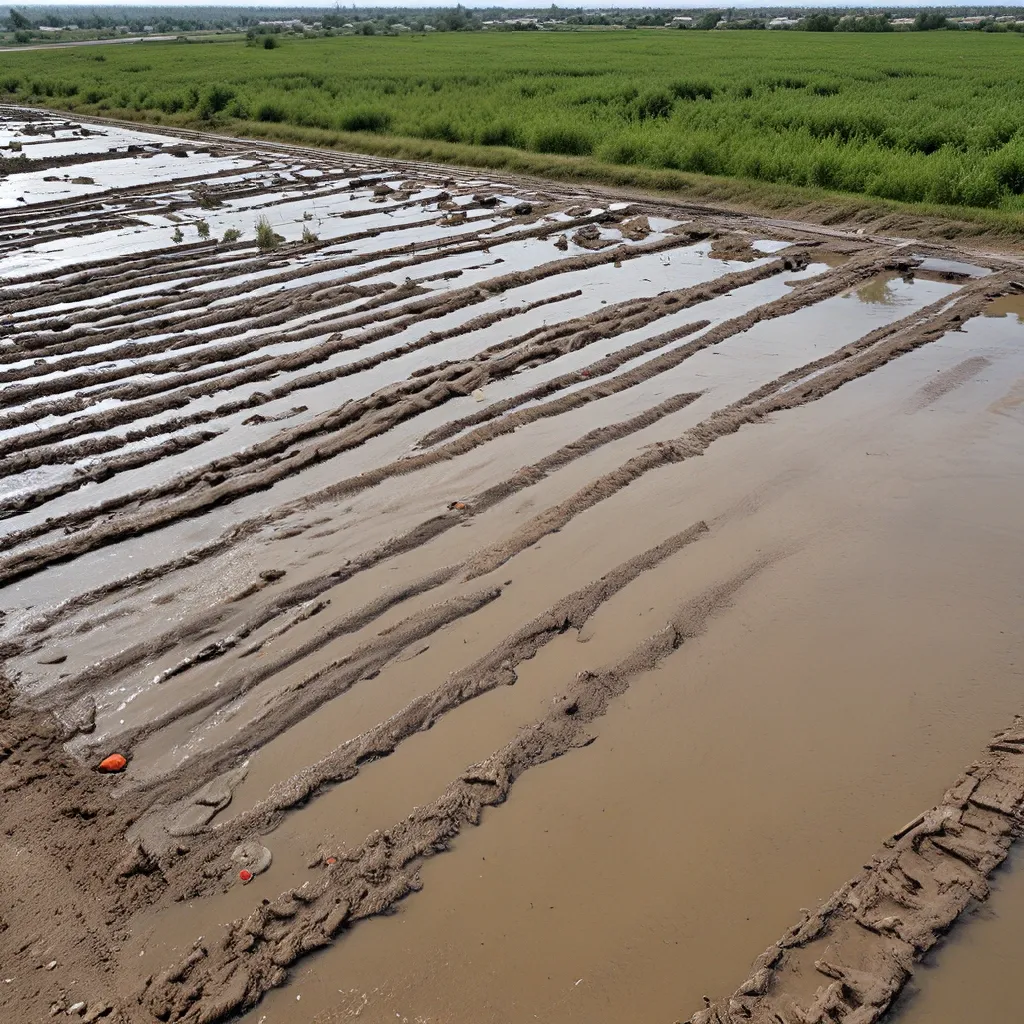
As the climate continues to change, communities across the globe are facing increasing challenges when it comes to maintaining critical infrastructure like wastewater treatment facilities. Extreme weather events, rising sea levels, and other climate-related disasters can wreak havoc on these essential systems, disrupting the reliable provision of wastewater services that we all depend on.
But here’s the thing – I believe we can get ahead of these looming threats and ensure our wastewater treatment operations remain resilient, even in the face of the most formidable natural disasters. It’s all about taking a proactive, holistic approach to disaster preparedness and adaptation. And believe it or not, I’ve got some pretty fascinating insights to share on how we can do just that.
Fortifying Wastewater Facilities Against Extreme Weather
One of the key strategies for enhancing the resilience of wastewater treatment plants is to reinforce the physical infrastructure against the impacts of extreme weather events. This could involve measures like elevating critical equipment, installing backup power generators, and designing buildings and structures to withstand high winds, heavy rainfall, and flooding.
Take the example of the Blue Plains Wastewater Facility in Washington, D.C. – one of the largest advanced wastewater treatment plants in the world. After Hurricane Sandy in 2012 caused significant damage to their facilities, the team at Blue Plains got proactive. They invested in a range of resilience-focused upgrades, including:
- Elevating electrical substations and critical equipment to protect against future floods
- Installing large floodgates to seal off vulnerable areas during high water events
- Implementing a robust backup power system with multiple redundancies
By taking these steps, the Blue Plains facility is now better equipped to withstand the impacts of major storms and flooding, ensuring they can maintain uninterrupted service to their community even in the face of the most extreme weather.
Diversifying Water Sources for Climate Resilience
But it’s not just about hardening the physical infrastructure – savvy wastewater managers are also exploring ways to diversify their water sources to reduce climate-related risks. One prime example is the Tampa Bay Water Authority in Florida.
Recognizing the threats posed by drought, saltwater intrusion, and other climate-driven water challenges, the Authority has taken a multilayered approach to building resilience. They’ve invested in a diverse portfolio of water sources, including:
- Desalination plants that can convert brackish groundwater and seawater into drinking water
- Aquifer storage and recovery systems that store excess surface water underground for use during dry spells
- Surface water reservoirs that can supplement supplies during periods of low rainfall
By having multiple reliable sources of water to draw from, the Tampa Bay region is far better equipped to withstand the impacts of climate change and ensure a continuous supply of clean water for their communities.
Integrating Green Infrastructure for Stormwater Management
Another key strategy for enhancing the resilience of wastewater systems is the strategic incorporation of green infrastructure into stormwater management plans. Things like bioswales, permeable pavement, and urban tree canopies can help reduce the burden on traditional ‘gray’ infrastructure during extreme precipitation events.
Just take a look at the work being done in Anacortes, Washington, where the city has taken a proactive approach to rebuilding their water treatment plant with climate change in mind. By incorporating green infrastructure elements like bioretention cells and rain gardens, they’re able to better manage stormwater runoff and minimize the risk of flooding and overflows at their treatment facilities.
And it’s not just about the physical infrastructure – cities like Washington, D.C. are also prioritizing staff training and capacity building around green infrastructure solutions. By equipping their municipal teams with the skills and knowledge to properly assess and implement these nature-based approaches, they’re ensuring their wastewater systems can adapt and evolve to meet the challenges of the future.
Collaboration and Data-Driven Planning
Of course, building climate resilience in the wastewater sector isn’t something any single entity can tackle alone. It requires cross-agency collaboration and a concerted effort to leverage the latest data and scientific insights.
That’s why initiatives like the Green Infrastructure Collaborative – a network of federal agencies, NGOs, and private sector partners – are so crucial. By bringing together this diverse array of stakeholders, they’re able to share best practices, pool resources, and coordinate on solutions that can be tailored to the unique needs of communities across the country.
And when it comes to the data side of things, wastewater managers are increasingly turning to tools like EPA’s Integrated Climate and Land Use Scenarios (ICLUS) project to better understand how future climate conditions might impact their operations. By incorporating these kinds of forward-looking, data-driven analyses into their planning processes, they can make more informed decisions about the investments and adaptations required to safeguard their critical infrastructure.
The Future of Resilient Wastewater Treatment
Make no mistake, the challenges posed by climate change to the wastewater sector are significant and complex. But I’m encouraged by the innovative strategies and collaborative approaches I’m seeing emerge from communities around the world. By fortifying our physical infrastructure, diversifying our water sources, integrating green solutions, and leveraging data-driven insights, I believe we can create wastewater treatment systems that are resilient, adaptable, and prepared to withstand even the most extreme weather events.
And that’s not just good news for the professionals working in this field – it’s crucial for the health and well-being of our communities, who rely on these essential services day in and day out. So let’s keep pushing the boundaries of what’s possible, and ensure that our wastewater infrastructure remains a pillar of resilience for generations to come.